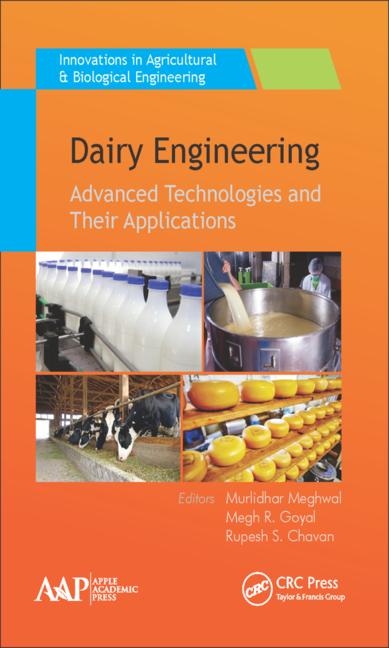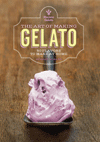Packaging Technology: Making Their Mark

Afew common threads run through just about every aspect of dairy plant operations these days – high efficiency, low maintenance, environmentally friendly. Labeling, whether it’s equipment or the labels themselves, is no exception.
“Many processors are living with 5- to 10-year-old mechanical labelers whose maintenance costs continue to rise, and whose operating efficiencies and speeds gradually decline,” says Bob Adamson, vice president of sales for B&H Labeling Systems, Ceres, Calif. “Fast size changeovers and fast label changeovers are becoming much more important to dairy processors. They also need equipment that does not require full-time operators or constant tweaking and adjustments.”
Label suppliers have to do everything possible to keep their customers competitive, says Rick Whipple, senior vice president at Anaheim, Calif.-based Osio International Inc. “Whether it is a new material or a new idea that can reduce costs, the dairy processor should not have to ask; it is the supplier’s duty to keep his customer informed.”
The team at Seal-It, a division of Printpack Inc., is proactive on cost-cutting efforts. “We have been very successful converting one of our largest dairies to a lower-gauge film. This reduces net material weight, which lowers costs in many ways and makes the label eco-friendly,” explains Barbara Drillings, marketing communications manager for the Farmingdale, N.Y.-based supplier of shrink-sleeve labels. “We are also working on a lower-shrink-force film, which aims to work on thinner gauge bottles. This also has light barrier UV protection which could allow processors to get out of multilayer bottles. In addition, we are currently developing a new, easier-opening, tamper-evident band.”
Coding, too, is an important part of product labeling. John Kirschner, director of marketing for the supplies business at Videojet Technologies Inc., Wood Dale, Ill., says dairy processors need equipment that integrates with production machinery and enables automation, and production equipment controllers that integrate a diverse set of devices (fillers, shrink wrappers, checkweighers, etc.) that must work together seamlessly, especially during changeovers.

What's up?
Sustainability issues seem to break down into the areas of mass reduction, recyclability and biodegradability.Downgauging and recycling have become commonplace. “Shrink labels are now 5% to 10% thinner than they were just a few years ago, resulting in less plastic being used and lower labeling costs,” Whipple says. “There is an existing and very efficient system for recycling PET bottles and films, but not for PVC or OPS. As a result, we are seeing many customers change to PET films … [so] the cost difference between PET and the less-expensive films is narrowing.”
Wal-Mart’s sustainability scoring of its suppliers has influenced label development, says Rich Keenan, national sales manager for PDC International Corp., South Norwalk, Conn. That has steered PDC toward innovations such as equipment able to run material as low as 27 microns, more energy-efficient motors and hot-air tunnels that recirculate hot air.
Concern for the environment is driving use of shrink film made from PLA, a biodegradable corn-based plastic. Seal-It offers PLA along with PETG, an alternative to PVC, Drillings says. “These films cost more, but as customers are becoming more knowledgeable about their environment, there is also pressure on retailers to offer packaging that is environmentally friendly,” she says.
Keenan says some of his customers have switched to PLA for their tamper-evident safety seals as well as full-body shrink labels. “PLA is a very good machineable film,” he says. “The PLA shrink film requires less heat to shrink, which allows the customer to lower their heat tunnels.”
But while Osio offers PLA labels, Whipple says it’s not the company’s preferred material. “We feel recycling is preferable to taking materials out of the recycling stream and dumping biodegradable materials in landfill. Second, using corn to make plastics takes up a resource that can be used for human consumption and animal feeds. The result is higher prices for corn and more land cleared for planting corn,” he says. “Personally, I find it unbelievable that politicians and celebrities are not getting up on their soapboxes and asking why we are using food to make plastics when so many people in the world are going hungry.”
With a trend toward more variable data being applied to products and packaging, Kirschner says coders must meet this trend while helping processors meet their sustainability goals.
“New continuous ink-jet printers use less energy. They can be pump-based systems that generally require less electricity and therefore have lower carbon emissions than compressed air systems,” he says. “New printers are more fluid-efficient; they reduce solvent evaporation and therefore emit lower emissions into the environment.”
In addition, new inks are increasingly more sustainable because they are formulated with alternative solvents, such as ethanol, acetone, water and other solvents with lower volatile organic compounds, reducing the amount of atmospheric emissions, Kirschner says. “More sustainable inks offer benefits like reduced costs in handling and shipping, waste disposal and in-plant handling costs. New ink-delivery systems, such as new sealed Smart Cartridges from Videojet, eliminate mess in removing and replacing ink and make-up fluids. Their design means every bit of ink is used, and they are ‘greener’ because empty cartridges can be sent back to the manufacturer for recycling.”

What's new?
Suppliers are rolling out many new products to meet processors’ demands.B&H’s Marathon series of roll-fed labelers features a PLC-controlled fully electronic drive train in which servos and variable-frequency drives replace chains, sprockets, gears and belts, Adamson says. “Marathon directly addresses the key needs of dairy processors by offering 15-minute size changeovers, two-minute label changeovers, low spare-parts consumption and a third of the maintenance labor required by mechanical labelers.”
Keenan says PDC has seen an increase in orders for its Splice-on-the-Fly option, both for new equipment orders and additions to existing systems. “The Splice-on-the-Fly unit allows the customer to splice the new roll without stopping the shrink labeler during a roll change.”
To meet processors’ desire for striking on-product graphics, Printpack’s Seal-It Division offers metallic effects, thermochromatic inks and matte and tactile finishes to help customers choose differentiation. “Processors are looking for the newest type of film that would be appropriate for their application,” Drillings says. “Our technological support is always available, and we send our tech manager out for trials and qualifications and troubleshooting.”
In the realm of label coding, Videojet sees wider adoption of digital coders that can apply unique, at-speed codes onto products and packaging. “These codes are important for managing in-plant and supply chain traceability,” Kirschner says. To apply these codes reliably, processors need equipment with improved uptime. “For example, the Videojet 1000 Line of continuous ink-jet printers reduces daily maintenance needs and provides up to 18 months of operation before preventive maintenance is required,” he says, adding that the latest equipment will have increased self-diagnostics and alerts of scheduled preventive maintenance or to replenish consumables like ink.
Integrated Packaging Machinery, Comstock Park, Mich., offers high-definition vision systems to make sure that label, cap and label placement on the container are correct to the liquid product in the bottle. Such systems overcome possible operator error in ensuring the product is as declared on the label.
What's next?
B&H’s Adamson says the “next big thing” will be labelers that feature cutters and label registration control systems capable of efficiently running the next generation of thinner labels, labels with variable coefficients of friction and labels that are out of spec in terms of registration and eye marks.“B&H’s Invation cutter, introduced in 2008, offers superior label handling and superior label transfer capabilities that help operators maintain uptime,” he says. “B&H’s Marathon Advanced Registration Control System also represents a major advance in label handling and registration control.”
At PDC, Keenan says the company continues to downgauge material and reduce overall power consumption. “As to the shrink-sleeve material market, there is a PETG material available that will give you UV barrier properties,” he says. “There will be a shrink-sleeve material coming very soon with high O2 and N2 barrier properties.”
Drillings says green issues will dominate the future, as more sleeves move toward the aforementioned PLA and PETG materials.
And increased attention on food safety will push label coding further forward, Kirschner says. “The FDA is considering traceability initiatives in the food industry to help protect the food supply chain,” he says. “As these initiatives progress, it is likely that the industry will see greater adoption of coding for track-and-trace initiatives.”
Extras
B&H Labeling Systems www.bhlabeling.com
Integrated Packaging Machinery www.callipm.com
Osio International Inc. www.osiopack.com
PDC International Corp. www.PDC-Corp.com
Seal-It, a Division of Printpack Inc. www.printpack.com
Videojet Technologies Inc. www.videojet.com
Looking for a reprint of this article?
From high-res PDFs to custom plaques, order your copy today!







